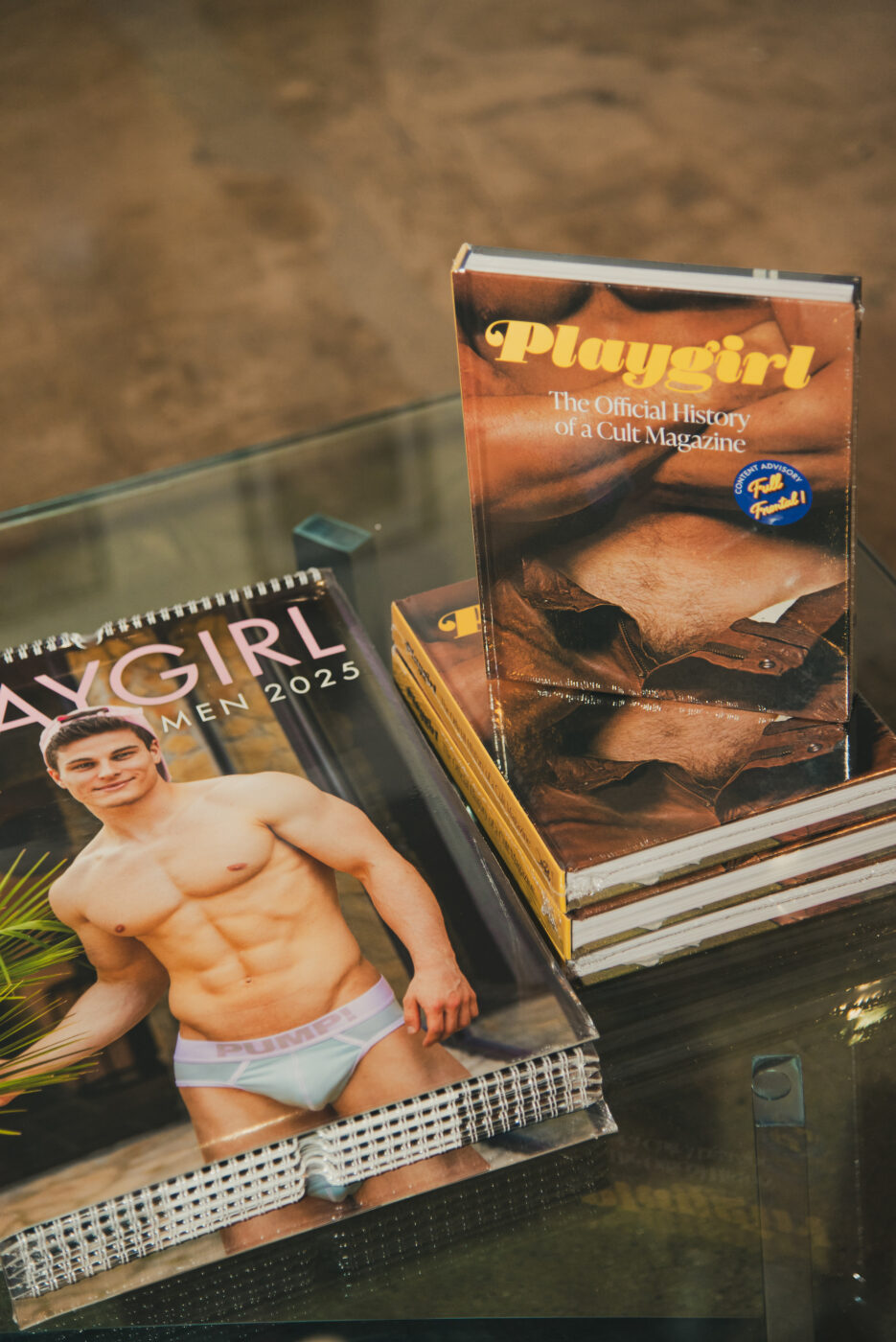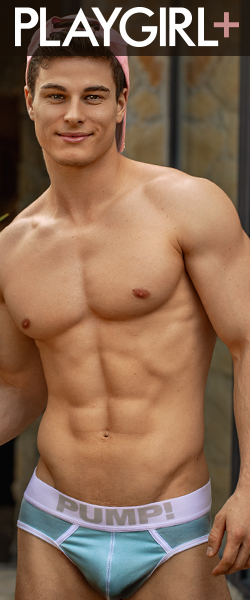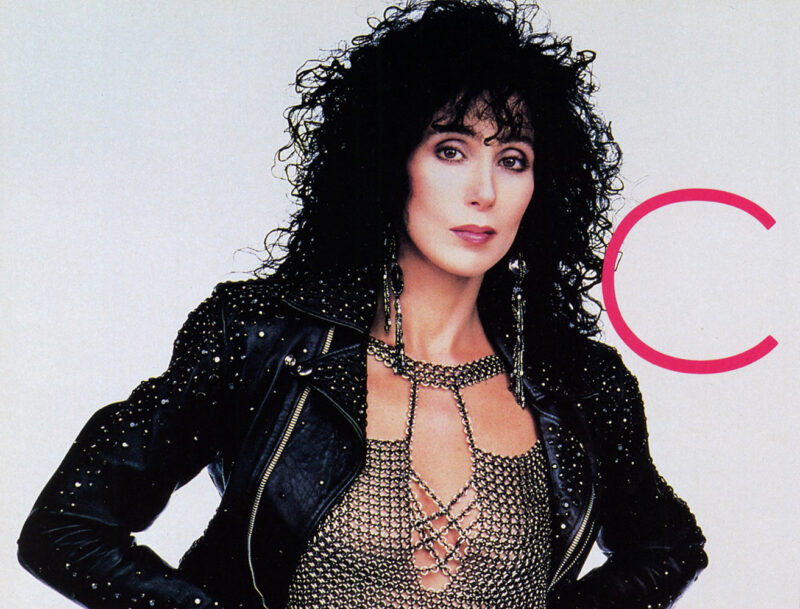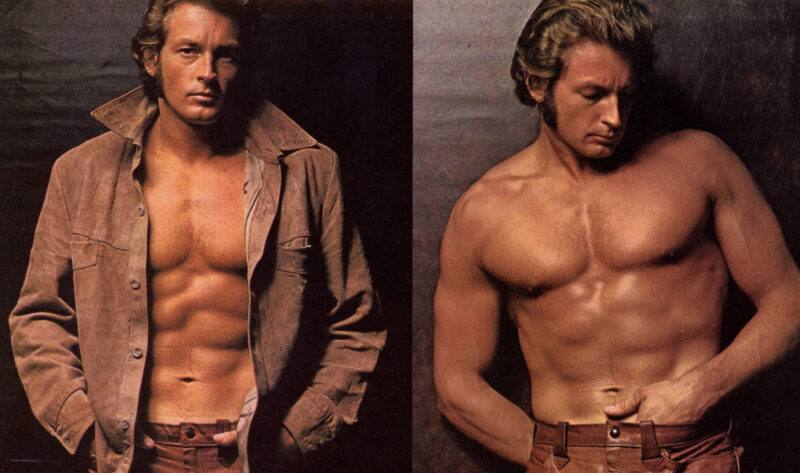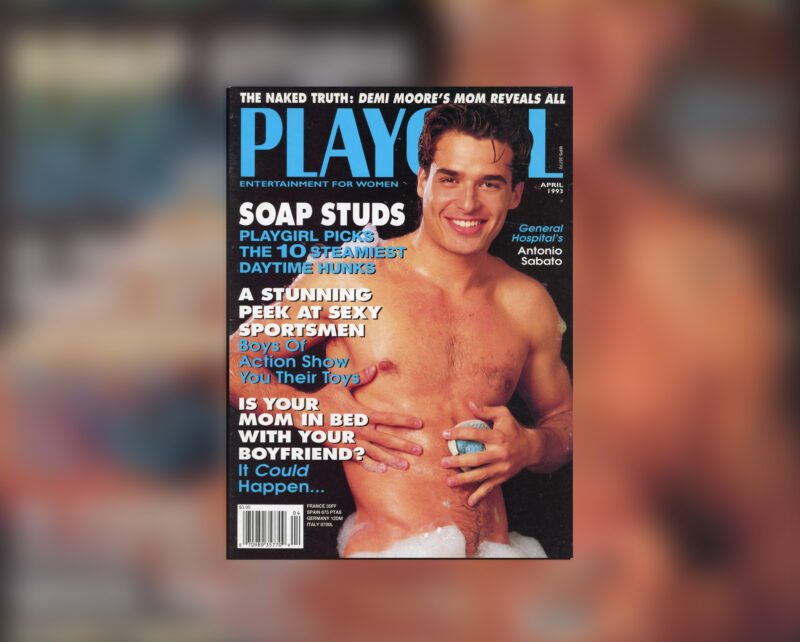Published by Abrams Books and available now on the store, on Amazon and Barnes and Noble.
As a closeted gay man growing up in the suburbs of Chicago during the ‘70s and ‘80s, I was thrilled anytime I stumbled across a gorgeous male physique. Seeing hunky actor Lee Majors show off his hairy chest on the Six-Million Dollar Man made my heart race. The summer Olympics was a chance to see runners in short shorts and swimmers in skimpy speedos. Of course, I always had to act like I was interested in the sporting event or TV show and not the hot men.
Then one day at the 7-Eleven, I fell in love with Playgirl. It was displayed behind the cash register with the other sexy magazines like Penthouse and Hustler, but this one was different: it unashamedly celebrated hot men. There were sexy celebrities like Lyle Waggoner (yes, that hairy chest!) and football hero Jim Brown. Muscly dudes, guys next door and more. Yes, Playgirl was meant for modern women, but I certainly related more to its sexually liberated female readers than I did to the horny straight guys who bought Playboy. For an adolescent gay-in-the-making like me, Playgirl was a godsend.
It offered me the sexiness I craved in such a celebratory, non-judgmental way, plus so much more. The magazine showcased amazing folks like Gloria Steinem, Jane Fonda, Truman Capote, and Dolly Parton. It featured respected writers like Joyce Carol Oates and William S. Burroughs. One of my all-time favorite Playgirl moments didn’t even involve a naked man. Studly, bearded Beverly Hills hairstylist to the stars Jon Peters was allegedly the inspiration for Warren Beatty’s character in Shampoo. More importantly to little gay me, he was the boyfriend of Barbra Streisand. In summer of 1973, Playgirl took actress Florence Henderson––yes, the mom from the Brady Bunch––to Peters’ salon for a makeover. It was a great pop culture moment, and it helped that Jon was sexy. Talk about checking all the boxes for a fashion and pop-culture-crazed young gay!
In society at the time, women were usually disrespected like gays were, so it was nice to see them treated well and catered to by a popular publication. And it was a treat to see hot men presented in a sex-positive way. These guys were happy to show off their physiques and be celebrated by readers. They had worked hard to get great bodies and were proud of them.
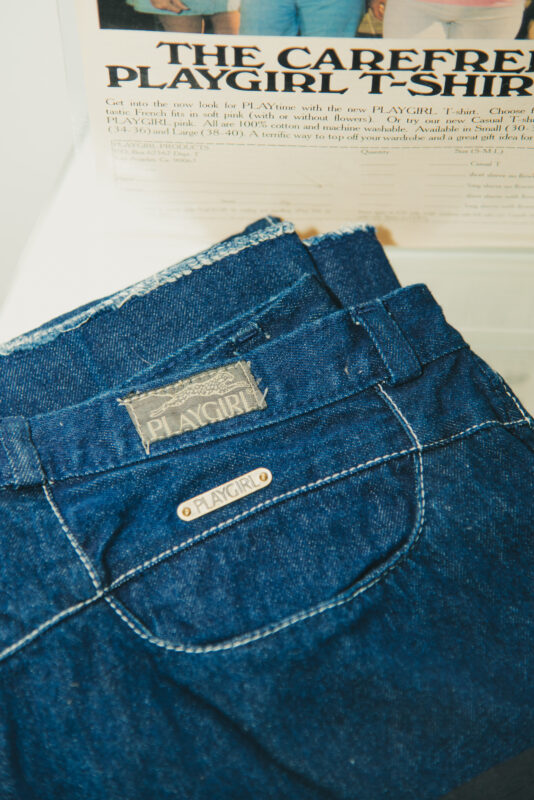
To this day, fifty years after the magazine launched in 1973, you can just say the word “Playgirl” and people know you mean sex positivity, empowering women, and celebrating hot, sexy men: men like Sam J. Jones, star of Flash Gordon; Steve Bond of General Hospital and Christopher Atkins from Blue Lagoon. So many of our pop culture icons stand on the shoulders of Playgirl––the proudly sexual stars of Sex and the City grew up in the residual glow of the magazine’s heyday. Everyone I know, male or female, knows the Playgirl brand.
While the magazine has traditionally been produced by and for women, naturally it developed a loyal following of gay men like me, who were excited to have a place to find gorgeous men showcased and celebrated. Our sexually liberated sisters shared their toys with the gays. And now, in 2023 even with gay publications that publish nude male pictorials, Playgirl is the OG. Surrounded by OnlyFans creators and thirsty Instagram fitness models, Playgirl’s Man of the Month feels special.
As I was growing up, the man who truly represented all Playgirl stood for was 1985 Man of the Year, Brian Buzzini. He was a hunky Italian who modeled for Versace ads shot by the iconic photographer Richard Avedon, as well as the campy and fun International Male catalog, another publication sought out by the gays for the scantily clad male models who posed in barely their underwear. That’s a high-low combo never matched in fashion! Buzzini was stunning and fit, a true dreamboat…
…Continue reading in The Official History of a Cult Magazine

